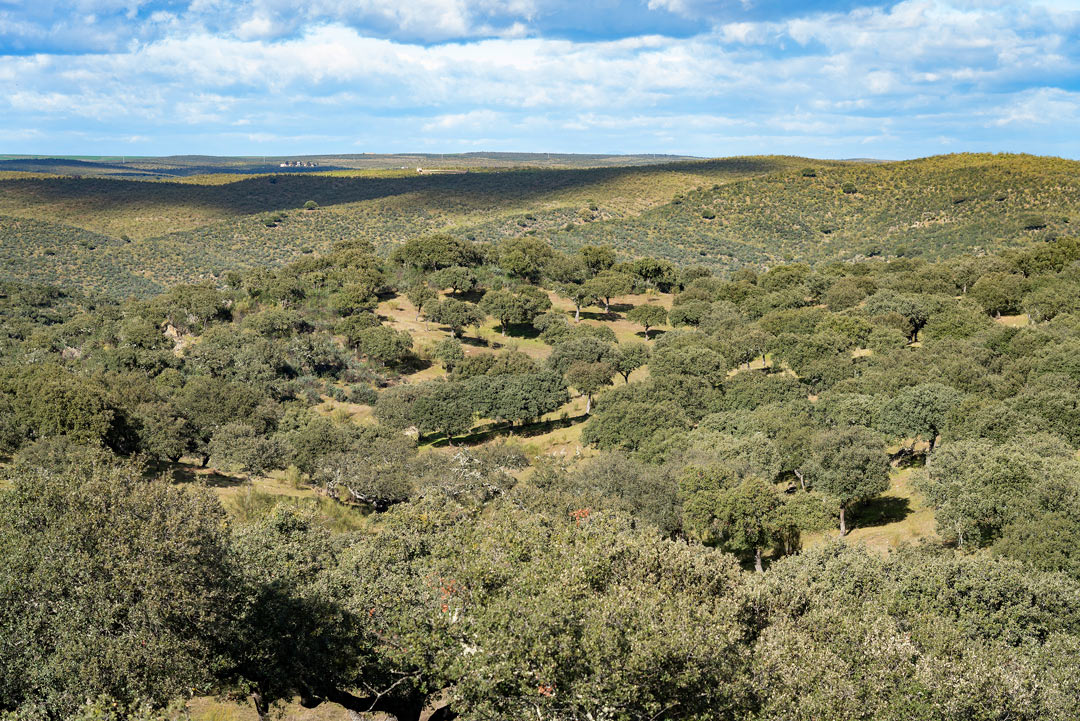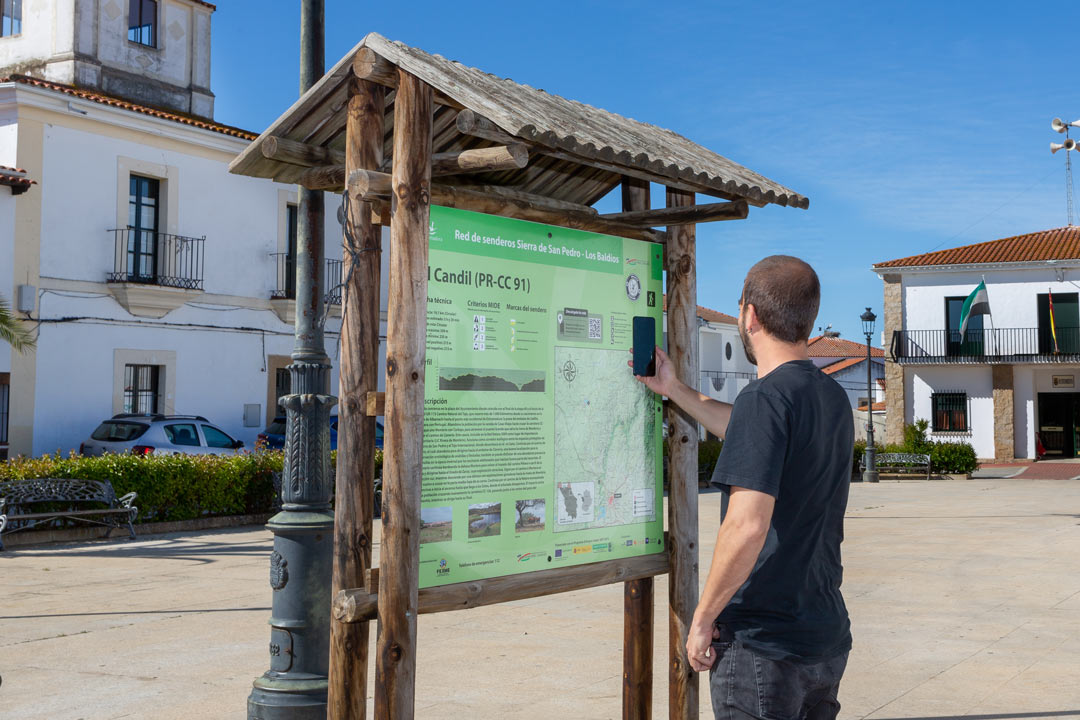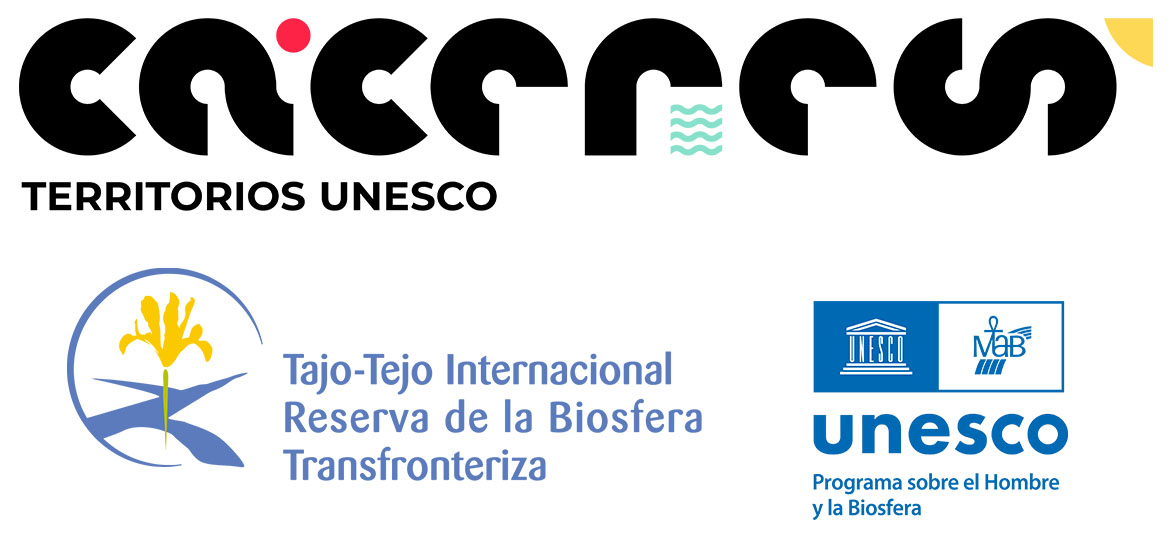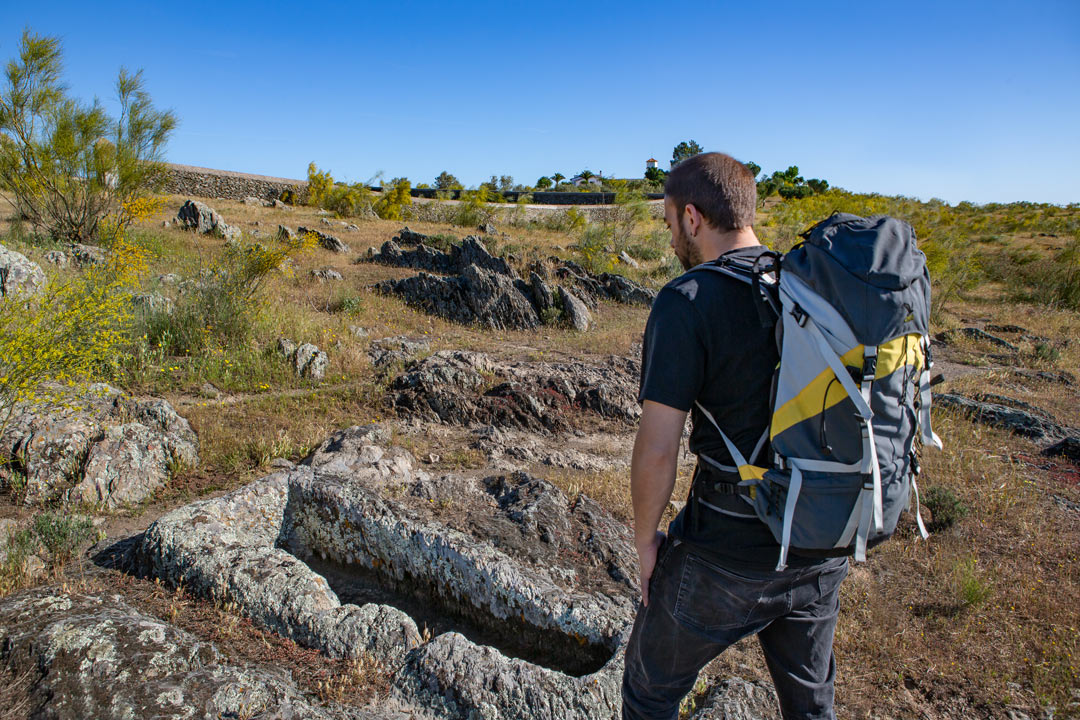Membrío
Stories of gold and huts on the dehesa
Contact
Membrío Town Hall
Plaza D. Juan Cilleros, 1
10580 Membrío, Cáceres (Extremadura)
Membrío is situated on the Trujillo-Cáceres peneplain in an area of low ridges of which the highest point is known as Sierra de Membrío. Its origins as a population centre lie in the 14th century. Its name may derive from a country inn which existed there (the Venta del Membrillo or del Membrillar) which provided accommodation and changed horses for the mail coach which covered the route between Alcántara and Herrera de Alcántara. Several houses were subsequently attached to it and these ended up forming a small settlement. In common with many other municipalities of the area, it belonged to the Order of Alcántara.
The rich historical past of Membrío is clear from simply taking a walk through its excellent dehesas, as although the village has a church and chapel its true heritage is hidden and scattered over the surrounding countryside: the hill-fort and anthropomorphous tombs of El Parral, the bridge of Roman origin over the River Salor, the old brick ovens, the flour mills, and the shepherds’ huts are but a small sample. The four hamlets of its former commands are also of note as they were closely linked to the formation of the village and the evolution of life down the centuries in Membrío: La Clavería, Castillo, Solana, and El Parral are their names.

Curious fact:
Where the Salor and Tajo Rivers join there were gold mines which made Membrío famous even in other countries. In the surrounding area one can observe the workers’ huts, the track followed by the carts which skirted the mound to transport the ore, the pithead, the wash house for the material extracted from the mine… and there is even in the surrounding area an eagle’s nest at which Félix Rodríguez de la Fuente shot a chapter of his documentary on this bird of prey.
Although it is a frontier village, there is no road link to Portugal in its municipal district as the border area of Membrío is part of the Tajo Internacional Biosphere Reserve.
You can’t leave without seeing…
As in other municipalities of the area, in Membrío there are also anthropomorphous tombs excavated in rock throughout the Municipal Association.
They have not been exactly dated but the most oft-repeated hypothesis is that they are late Roman or Visigothic from the 7th century. They can be found on the El Parral estate and also on the La Sardinera estate.

From Membrío sport and nature merge on two circular routes which have been marked and officially approved by the Extremadura Mountain and Climbing Federation (Federación Extremeña de Montaña y Escalada, FEXME).
El Candil (PR-CC 91): With a distance of 20.5 km and an approximate duration of 5 hours, this walk is easy/of moderate difficulty. It starts from the Plaza del Ayuntamiento and passes the pool known as the Charca de la Clavería, dehesa landscapes, and the Membrío Stream. Here can be seen griffon and Egyptian vultures, kites, ravens, red deer, foxes, and wild boar and also feeding places for the cranes.
Pantano de la Jabalina (PR-CC 92): This route is classed as easy with its distance of 16.4 km and its approximate duration of 4 hours. It is practically flat throughout and the views are magnificent. It is worth enjoying this trail surrounded by the dehesa and cork oaks and its peaceful waters once we are on the reservoir (pantano).
Some date from the 16th century, this type of hydraulic mill ceased to operate in about the 1930s and they are interesting in that they were the first places in which raw materials were transformed.
The Herreruela Social Centre should not be missed by enthusiasts of urban art. The artists Jesús Brea and Jonatan Carranza Sojo have reflected local history on its façade in the form of two magnificent murals dedicated to Infanta María of Portugal and “El Chico Cabrera”. In this manner they fuse the reality and the legend of these important figures of Herreruela and the Tajo-Salor District.
Princess María Manuela of Portugal spent a few days in Herreruela in 1543 when she was on her way to marry the prince who would become King Philip II. Her stay at Herreruela caused a great stir owing to the impressive retinue which accompanied her.
“El Chico Cabrera“, for his part, was a well-known bandit of the district of the mid-19th century with a peculiar series of legends and adventures attached to him. Although he was from Brozas, he could easily be found anywhere along the Tajo engaged in smuggling.


